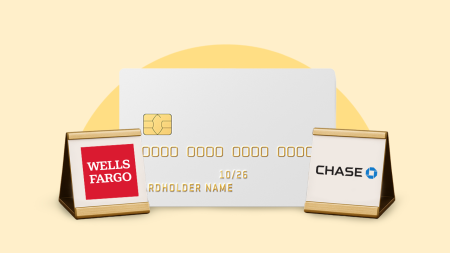With all the talk swirling about inflation and tariffs, consumers have been (rightly) braced for prices to go up. While unwelcome for things like cars and eggs, rising prices can deliver some benefits, particularly for homeowners. Home values sit notably higher than they did five years ago.
Home equity lenders seem to have taken note – and are increasing loan and credit line limits accordingly. Early this year, for example, Discover raised the ceiling on some of its home equity loans from $300,000 to $500,000. HELOC credit limits are up as well, according to data compiled by credit reporting bureau Experian.
Does this mean inflation has hit home equity lending — and, if so, how does that affect you? What’s the max you can borrow with a home equity loan or HELOC, anyway, and what influences the amount? Let’s find out.
How big can home equity loans and HELOCs be?
Finance folks often call home equity loans and HELOCs “serious money loans” — and for good reason. The sums offered by these borrowing vehicles are based on a home’s appraised value, which means they “can range from $10,000 to $1,000,000,” explains Susan Allen, chief product officer for Experian Housing, which offers property/mortgage data and tools for real estate professionals. A few lenders, usually credit unions like Connexus Credit Union, go as low as $5,000.
But those are outliers. In the home equity universe, five figures is the bare amount to borrow: Many lenders set minimums of $25,000. The benchmark home equity loan and HELOC that Bankrate tracks for its rate reports are for $30,000. On the other end, the maximum lenders extend often runs to hundreds of thousands of dollars — or even more.
Among the lenders offering up to $1 million loans or credit lines are:
And some lenders are upping their ante. At Discover, which offers home equity loans, “we recently increased the maximum on our first-lien loans to $500,000,” Samir Patel, senior vice president of personal and home loans, says. (A first-lien HELOC or home equity loan is the sole debt on a residence; there’s no other mortgage on it. ) In contrast, second-lien home equity loans exist on homes that still have a primary mortgage. Discover’s max on second lien HE Loans remains $300,000.
Home equity loan amounts: steady increase
Thanks largely to appreciating prices over the last few years, the worth of homeownership stakes has grown all over the U.S. Equity-holding homeowners have more to borrow, and they’re borrowing more. Since the pandemic, the size of home equity loans has steadily increased, as indicated by Intercontinental Exchange, Inc. (ICE), an analyst of real estate and financing data.
|
2020 |
$54,516.09 |
|
2021 |
$44,378.19 |
|
2022 |
$58,131.45 |
|
2023 |
$67,894.85 |
|
2024 |
$74,552.79 |
|
Q1 2025 |
$86,446.43 |
HELOC amounts: on the rise
HELOCs (home equity lines of credit) have had a bumpier path over the last few years – perhaps due to their variable interest rates, which at one point hit 10 percent (in contrast, home equity loans offer more stability with their fixed interest rates). Still, they’ve recovered of late, as per ICE data. Here are average credit line amounts:
| 2020 | $128,148.03 |
| 2021 | $135,112.11 |
| 2022 | $144,168.04 |
| 2023 | $134,881.87 |
| 2024 | $138,582.12 |
| Q1 2025 | $149,114.63 |
Experian’s data verifies that HELOC credit limits increased last year anywhere from 1 percent to 6 percent, depending on the state. Allen notes that Experian has also seen an increase in how much of their credit line people are actually tapping: “In 2024, the average HELOC balance in the U.S. rose … 7.2 percent from the previous year.”
What affects the amount of home equity you can borrow?
Lender limits are all well and good. But the amount you can actually access from home equity loans and HELOCs depends on a few factors that are specific to you. Let’s look at each of them individually.
Amount of available home equity
Home equity loans and HELOCs are backed by the equity in your home, or the amount of your house you own outright (as opposed to still owing on your mortgage). As a result, the amount of equity you have determines how much you can borrow.
Equity has been on the rise for American homeowners, notes Andy Walden, ICE head of mortgage and housing market research — from $6.4 trillion in 2020 to over $11 trillion in 2024.
As home values – and hence, the amount of home equity – have risen, lenders have increased the max amount they’ll extend.
Keeping a cushion
There’s a difference between the amount of equity you have on paper and the amount you can actually borrow against. Lenders won’t necessarily let you pull all of your equity out in the form of a HELOC or home equity loan — and for good reason. If your home’s value declines, you could end up owing more on the place than it’s actually worth. Letting homeowners tap 100 percent of their equity partially contributed to the 2008 housing crash and subsequent recession.
As a result, a lot of lenders will only extend home equity loans and HELOCs for up to 80 percent of your equity. Some will go higher, though, especially for extremely creditworthy borrowers. SoFi, for example, offers HELOCs for up to 90 percent of the home’s equity, and home equity loans for up to 85 percent of the equity amount. Navy Federal Credit Union sets a 95 percent maximum for its HELOCs and will go up to 100 percent for home equity loans.
Your borrower profile
In addition to the maximum percentage of equity that lenders will allow you to tap and the overall loan limits they set, other factors come into play – relating to your financial profile and qualifications.
Applying for a home equity loan or HELOC isn’t unlike applying for a mortgage. The lender will want to see information about your current financial situation, and will use that to either approve or deny you for the loan. They also use this data to determine the size of the loan they’ll offer you, plus the interest rate they’ll charge you.
Specifically, most lenders will look at your:
- Credit score
- Income (both consistency and overall amount)
- Debt-to-income (DTI) ratio (what percentage of your monthly income goes to monthly obligations)
Discover, for example, looks for “a credit score of 680 or above, a history of responsible credit use, verifiable employment and income… [and] a DTI ratio of less than 43 percent,” Patel says.
How much equity should you borrow?
Just because you get through a lender’s approval process and get offered a certain amount of money doesn’t mean you should take all of it. The right loan size depends on your specific needs and, most importantly, your ability to repay what you borrow.
Some things you should consider include:
- Preserving an amount of equity. The lender’s 15-20 percent standard aside, “the ‘cushion’ amount of equity that a homeowner should consider leaving in their home is unique to their financial situation, including their budget and their comfort level,” Patel says. In other words, how big of a fresh debt can you assume? How much of your home’s value do you want to dilute? Like mortgages, home equity loans are liens that must be repaid in full when a home is sold – something to bear in mind if you plan to put yours on the market fairly soon.
- How you’ll use the money. Home equity loans and HELOCs shouldn’t be a substitute income stream. Instead, they should be used for a positive financial goal: an investment in your property or your business, or to pay off higher-interest debts (like outstanding credit card balances). If you use the money to substantially repair or upgrade your home, for example, you could also see some tax benefit.
- How much you really need. Generally, you should only borrow what your expenses will be, even if a lender offers you substantially more. Remember, these loans come with a cost, and the more you borrow, the more you’ll pay in interest. With HE Loans, you start repaying the entire amount (principal and interest) right away. With HELOCs, you only pay interest on what you actually borrow. But many HELOC lenders require a minimum draw upon opening the line — and that means paying interest on that money.
To sum up: “Before applying, ensure you have a clear understanding of how you will use a HELOC [or HE Loan] and a plan for paying back the amount you borrowed as agreed,” Allen advises. “Only borrow what you need and can afford to repay comfortably.”
FAQ
Read the full article here









